| Femmes Fatales | Mar 29 2021 |

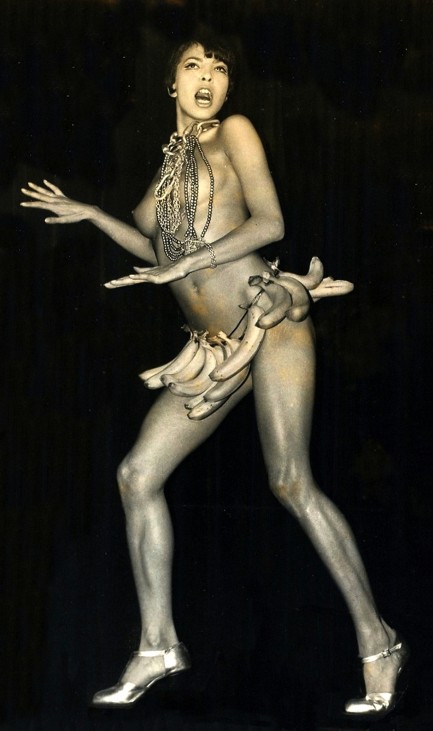
 don't feature her with real bananas, but rather costuming constructed to resemble them. The shots of her with actual bananas—such as the one you see here—are less famous.
don't feature her with real bananas, but rather costuming constructed to resemble them. The shots of her with actual bananas—such as the one you see here—are less famous.| Femmes Fatales | Nov 29 2015 |

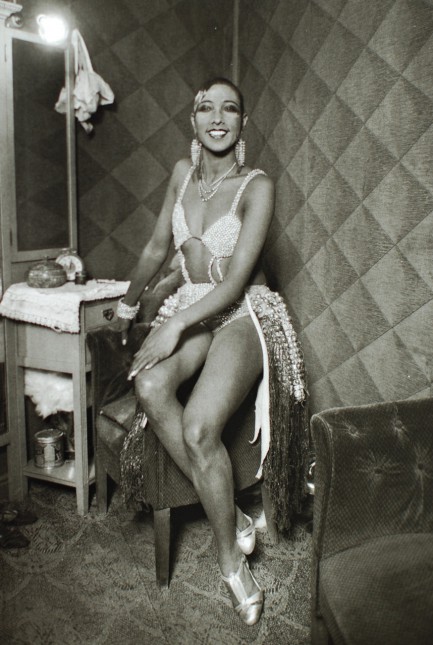
| Femmes Fatales | Nov 21 2015 |


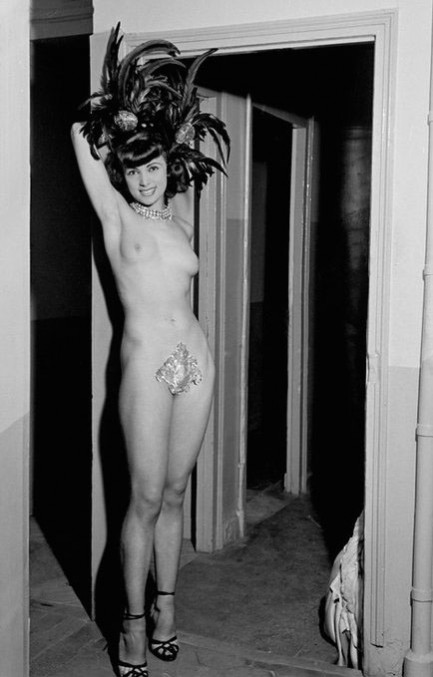
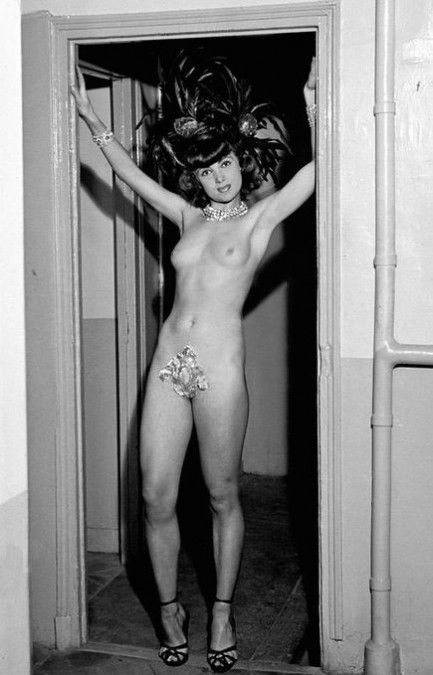
French burlesque dancer Yvonne Ménard is all smiles, and why not? That thing she wears between her legs probably tickles. Ménard also may be smiling because when these photos were taken she was about as famous as a dancer could be. She had started as a nude mannequin at La Cigale, then joined the cast of Folies Bergère as a replacement for a departing Josephine Baker after understudying the great American star during the 1949 season. Ménard was twenty when she took the lead role—the photos above were made backstage at the Folies shortly afterward. One of the acts Ménard developed showed her struggling against the lure of opium. She wore only her famous glittering leaf, and battled dark male figures only to be eventually carried by them into a smoking pit.
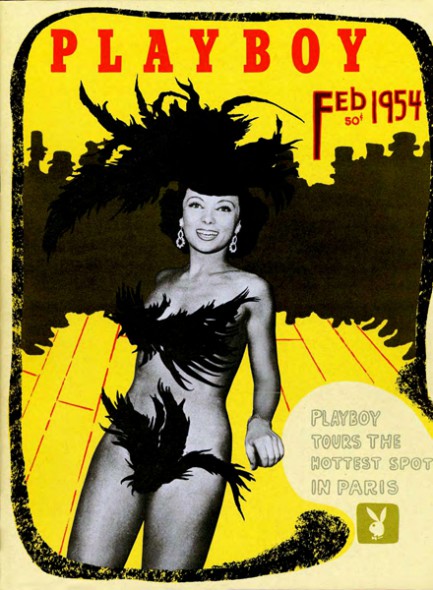 Ménard’s performances were a bit different from Baker’s—she couldn’t sing as well, and her dancing was a work in progress, but she would eventually master various flips and aerial maneuvers, which she once demonstrated for a photo feature in Life magazine. She toured the U.S. numerous times, making stops in New York, Miami Beach, and Las Vegas, and also performed in South America. Somewhere in there she made time to appear on the cover of the third issue of Playboy, in February 1954, and writer Georges Tabet said inside the issue, “Yvonne is the crystallization of Paris. She’s got a petit quelque chose—a little something—that you have to be born with. Chevalier, he has it in his smile. Edith Piaf has it in her voice. This one—she has it all over.”
Ménard’s performances were a bit different from Baker’s—she couldn’t sing as well, and her dancing was a work in progress, but she would eventually master various flips and aerial maneuvers, which she once demonstrated for a photo feature in Life magazine. She toured the U.S. numerous times, making stops in New York, Miami Beach, and Las Vegas, and also performed in South America. Somewhere in there she made time to appear on the cover of the third issue of Playboy, in February 1954, and writer Georges Tabet said inside the issue, “Yvonne is the crystallization of Paris. She’s got a petit quelque chose—a little something—that you have to be born with. Chevalier, he has it in his smile. Edith Piaf has it in her voice. This one—she has it all over.”
| Vintage Pulp | Aug 17 2011 |

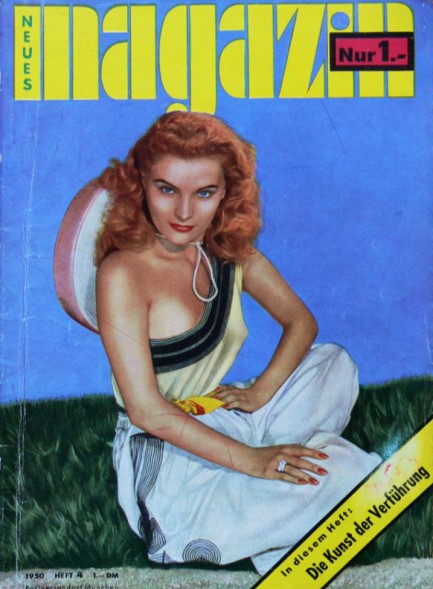
Above is the cover of the German mid-century art and culture publication Neues Magazin. This is issue number 4, which you can see indicated at lower left—heft 4, year 1950— and the text at lower right tells us that we’ll learn the art of “verführung”, or seduction. There are many interesting images inside, but for us there are two clear winners. The first is the rare ad for Jane’s Russell’s Der Engel mit den zwei Pistolen, which was known in the U.S. as The Paleface, and the second is the portrait of Josephine Baker by French illustrator Jean-Gabriel Domergue. Those pages and others appear below.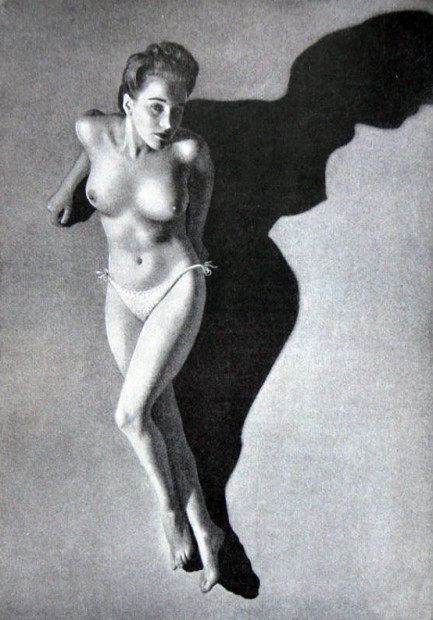
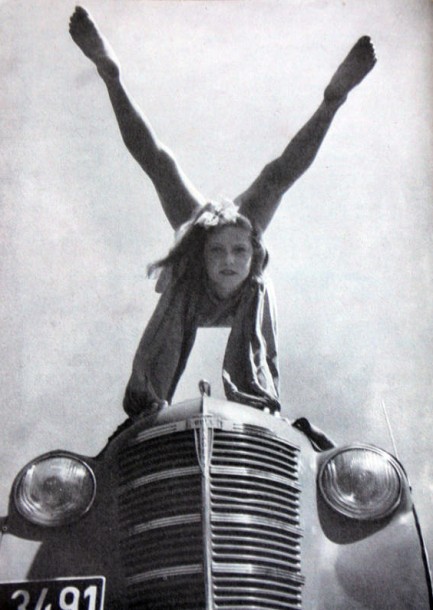
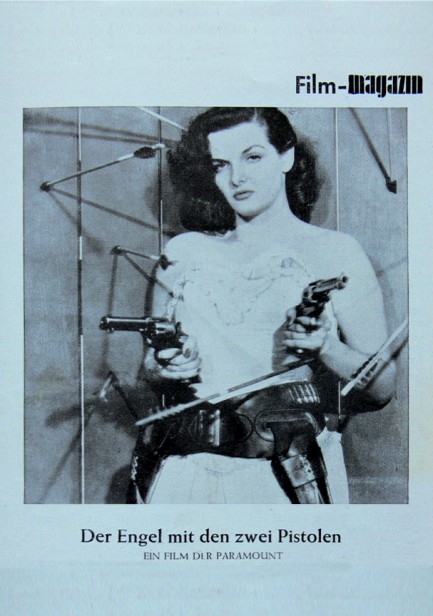
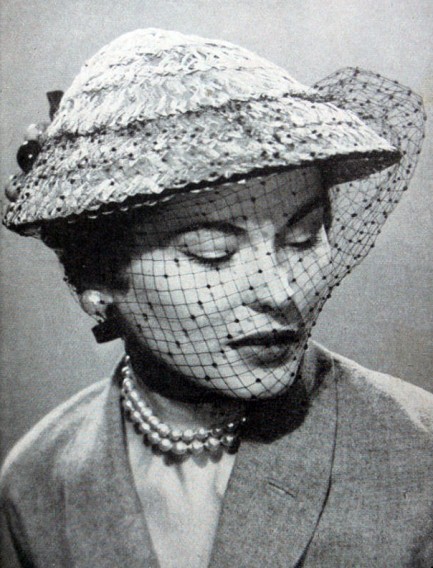
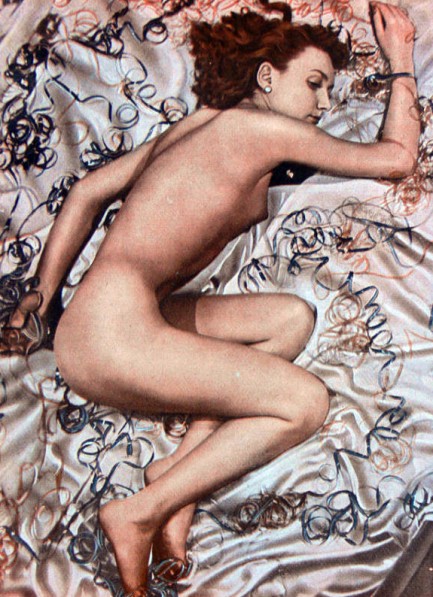
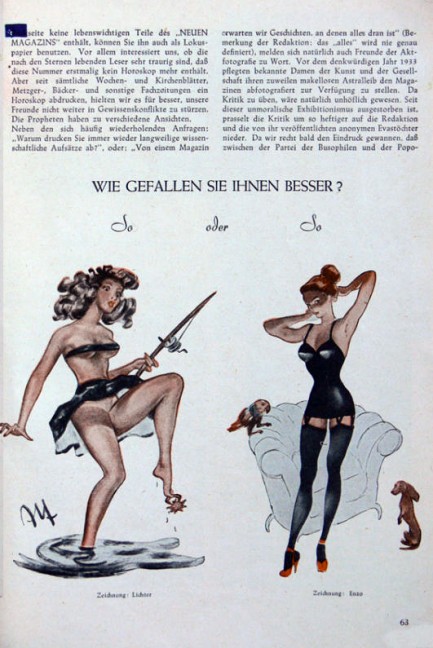
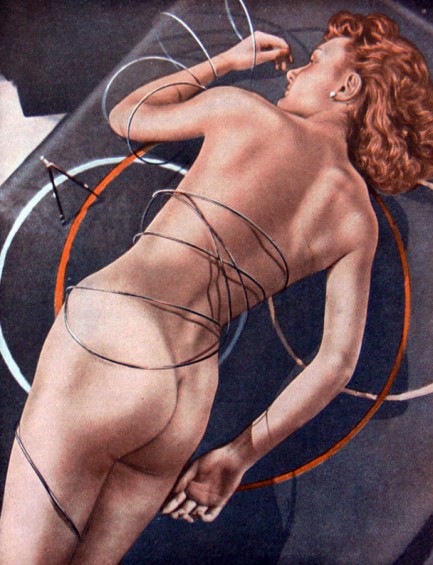
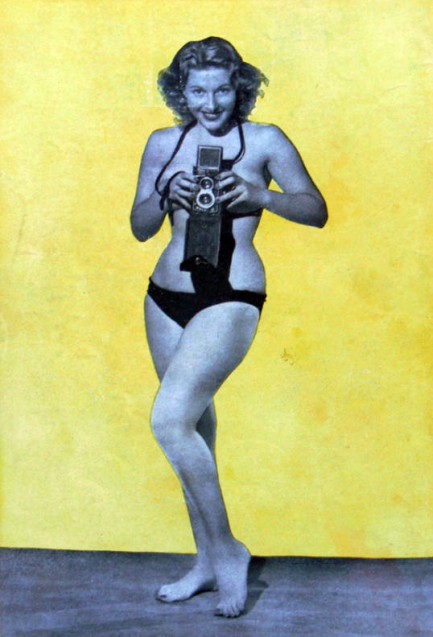
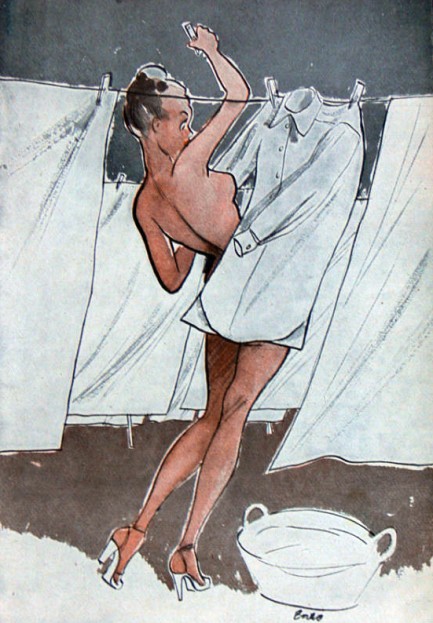
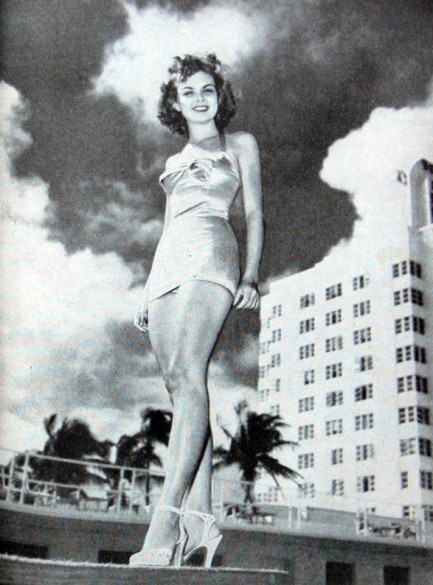
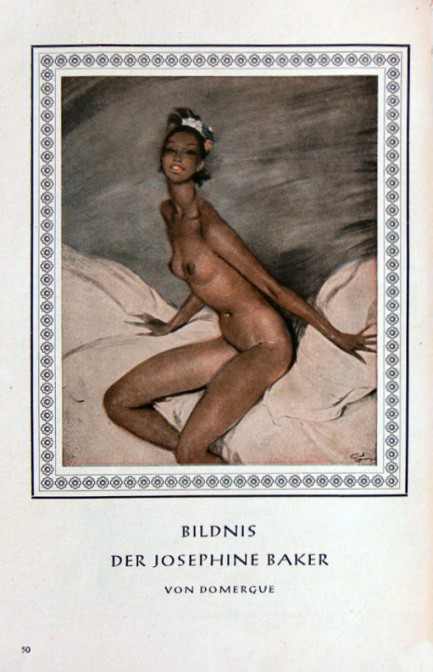
| Intl. Notebook | Dec 30 2010 |

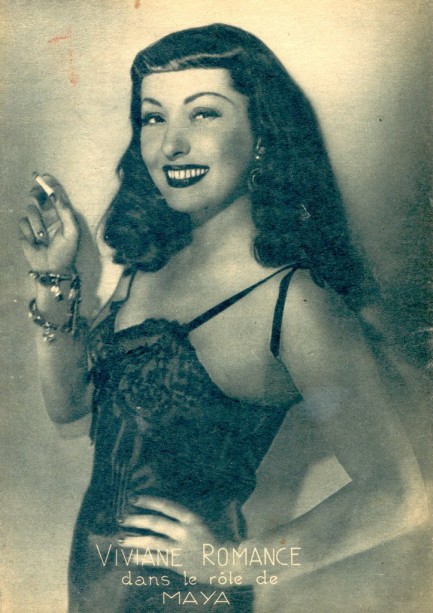
A couple of days ago we did a post of Mexican film magazines and basically, we knew none of the cover stars. But we were curious, especially about the interestingly named Viviane Romance, and decided to dig a bit more deeply. Born Pauline Arlette Ortmans in France in 1912, her career began in 1925 at age thirteen, when she danced at the Sarah Bernhardt Theatre in Paris. The next year she scored a spot as a Moulin Rouge dancer, and at sixteen moved on to dance at the famed Bal Tabarin nightclub. At eighteen she entered and won the Miss Paris pageant but was stripped of her title when she was found to be pregnant.
This loss of her crown, while doubtless dismaying for Romance, also generated public recognition that she parlayed into a film role in 1935’s Princess Tam Tam, in which starred American dancer Josephine Baker. In 1936’s La belle équipe, she played the role of a young woman who destroyed the friendship of co-stars Jean Gabin and Charles Vanel. The film was a hit, and a series of bad girl roles followed in Naples au baiser de feu, La Maison du Matais, Prisons de femmes and Le puritain. She had become one of cinema’s first femmes fatales.
When the German army swept into France in May 1940, Romance found herself caught in a dilemma. The Nazis were eager to create a veneer of normalcy. That meant they were willing to allow the French film industry to function, though under the auspices of their Propagandastaffe, which would censor any content deemed disrespectful or harmful toward Germany. Faced with the choice of working for the Nazis or retiring—which might not have been allowed without serious consequences—Romance chose to continue performing, and starred in Vénus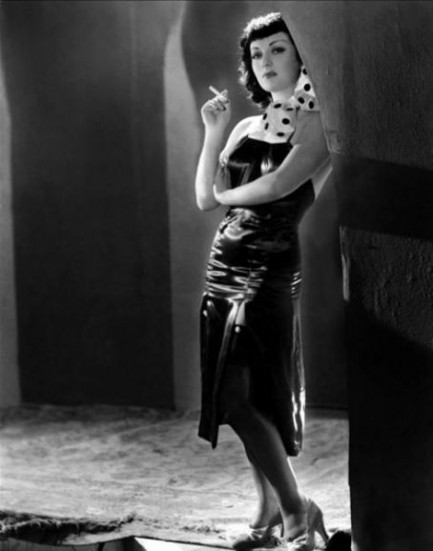 aveugle, Feu sacre, Une femme dans la nuit, and Cartacalha, reine des gitans. In the last, she sang the hit song “Chanson gitane (Sur la route qui va).”
aveugle, Feu sacre, Une femme dans la nuit, and Cartacalha, reine des gitans. In the last, she sang the hit song “Chanson gitane (Sur la route qui va).”
It’s worth pointing out that Romance wasn’t alone in her decision to perform for the Nazis. Many of France’s top stars, including Danielle Darrieux, Junie Astor, René Dary, Suzy Delair, Albert Préjean and others did the same. In select instances, some type of pressure was brought to bear. For instance, in Darrieux’s case, the Nazis had imprisoned her husband Porfirio Rubirosa, and her acting was the price for his freedom. At the same time, it should also be noted that many French actors made the choice to ignore the plight of their Jewish compatriots. The Germans banned Jews from any participation in cinema, and the workers who remained were required to carry cards affirming their non-Jewishness. Thus while the genocidal extent of Nazi plans may not have been crystal clear to some actors, the intent to—at a minimum—erase Jews from public life was certainly no secret.
But Romance and others performed anyway. And of course, giving the Nazis an inch meant they would take a mile. Ever vigilant for propaganda opportunities, party officials pressured Romance, Darrieux and the other actors into traveling to Germany for a highly publicized visit to several Berlin film studios. Newspapers and newsreels touted the appearances in a blatant attempt to burnish the Nazis artistic bona fides. For the segment of French citizenry opposed to the occupation, the actors had crossed the line. It was one thing to continue working—everyone needed to do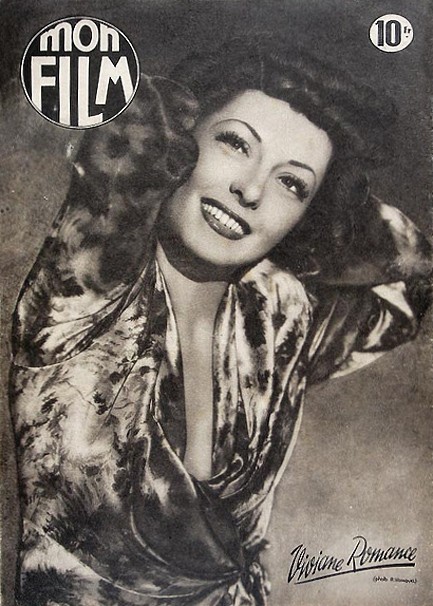
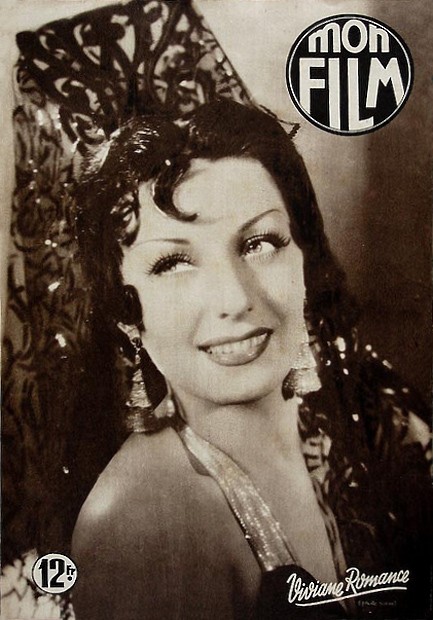 that. But to allow themselves to be used to legitimize the Nazi agenda was an entirely different story. When the Germans were finally expelled from France in 1944, Romance was thrown in jail. We don’t have much information about this event. We can only say she was eventually forgiven—officially at least—for what many perceived as her feeble level of the resistance to the Nazis.
that. But to allow themselves to be used to legitimize the Nazi agenda was an entirely different story. When the Germans were finally expelled from France in 1944, Romance was thrown in jail. We don’t have much information about this event. We can only say she was eventually forgiven—officially at least—for what many perceived as her feeble level of the resistance to the Nazis.
After the war, Romance immersed herself in work, making eight movies in the next three-plus years. In 1949 she played the role of Bella in the film Maya, for which you see the promo art at top. Her performance was lavishly reviewed—she was the toast of Paris again. Romance worked steadily through the next decade until her star began to dim in the early 1960s. She grappled with financial difficulty in the mid-1960s, and at one point had to sell off her possessions to survive. She made her last film, Nada, in 1974, and died in 1991 in Nice, on France’s Côte d’Azur, at age seventy-nine.
It would be journalistically tidy to write that Viviane Romance lived a life that somehow embodied her stage surname, but it would also be glib and untrue. The scandal of unwed motherhood, the climb up the ladder while still just a teenager, the shadow of Nazism over the prime of her career, her stint behind bars—none of it can be romanticized. Nor can her three failed marriages. If anything, Romance was like the narrator of the song she once memorably performed, “Chanson gitane.” That woman was strong enough to pass “with a noise of horses” but fragile as “a shiver of tinsel.” Ultimately Romance's story mirrors that of many women who survived dangerous times. They had to be tough, smart, and pragmatic—then when order returned they had to be judged on their failings and hope for forgiveness.
that somehow embodied her stage surname, but it would also be glib and untrue. The scandal of unwed motherhood, the climb up the ladder while still just a teenager, the shadow of Nazism over the prime of her career, her stint behind bars—none of it can be romanticized. Nor can her three failed marriages. If anything, Romance was like the narrator of the song she once memorably performed, “Chanson gitane.” That woman was strong enough to pass “with a noise of horses” but fragile as “a shiver of tinsel.” Ultimately Romance's story mirrors that of many women who survived dangerous times. They had to be tough, smart, and pragmatic—then when order returned they had to be judged on their failings and hope for forgiveness.




































































